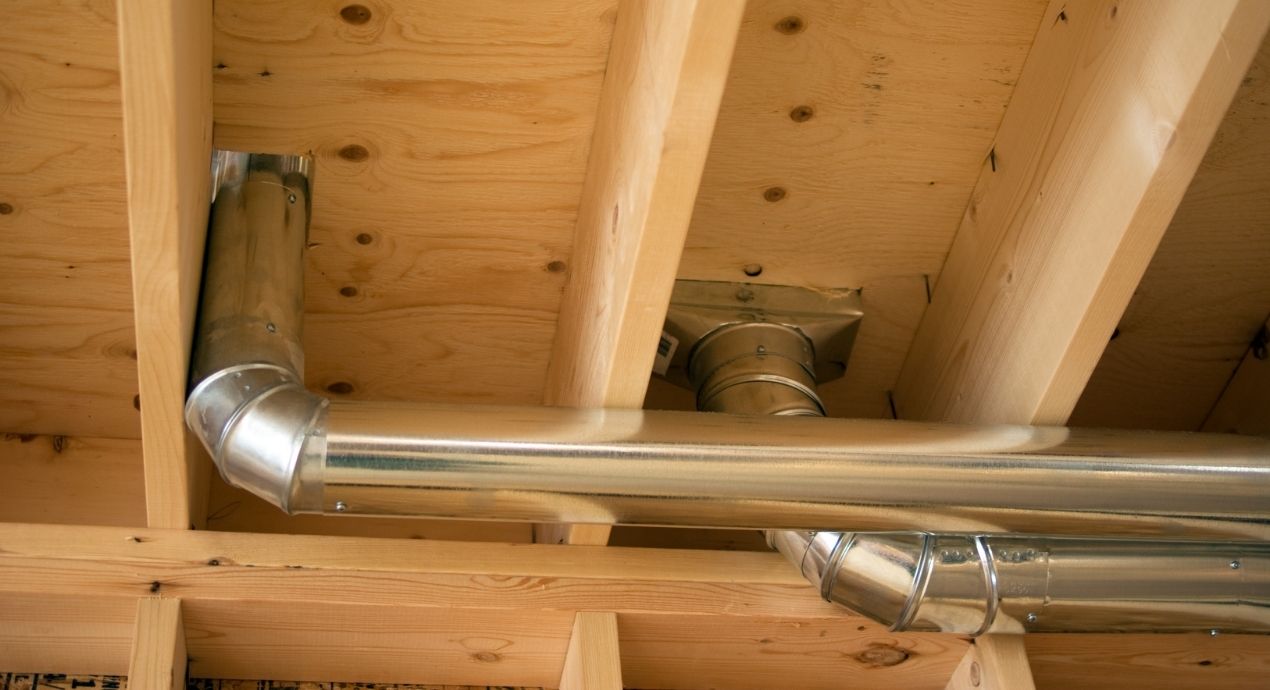
Contemplating coverage?
Subscribe to receive our emails & get
$200 off!
Have questions?
Call us: (833) 544-8273


Written By Erin Easley
Your home’s HVAC system would be indispensable even if all it did was keep you warm in the winter and cool in the summer. But the ventilation a properly functioning HVAC system provides is critical to maintaining a healthy living space. Poor ventilation can mean high levels of toxic gases and airborne particulates. It can also facilitate the growth of mold and bacteria.
Serious or uncommon problems that afflict HVAC systems may need to be diagnosed by a qualified technician. For some common issues, though, troubleshooting ductwork problems is something the average homeowner can handle. This post will help you know how to identify problems with ductwork in your home. We’ll also explain how you can go about resolving these issues.
It’s no surprise that dust accumulates within a home’s ductwork. This can cause that distinctive smell when you turn the heat on for the first time in autumn. Excessively dirty vents worsen the air quality in your home.
If your home’s ductwork could do with a cleaning, you’ll likely notice the stale odor. You can check your registers and vents to see if there’s a visible accumulation of dust.
The most effective way to clean your ductwork is to call in a professional, who come prepared with specialize brushes and vacuums. But you can eliminate some of the dust on your own. Place some paper towels over each register in your home. Then turn on your HVAC system’s fan setting. Use a broom handle or other tool to knock on the visible ductwork in your home—think basement, attic, and crawlspaces. Next, remove the paper towels and registers one by one and use a powerful vacuum to catch any dust that may escape. You can use a long-handled brush to reach as far into each register as you can to further dislodge any dust.
It’s also wise to routinely clean your furnace fan and replace the filters in your furnace and air conditioning units.
Believe it or not, up to 40% of the air that travels through an HVAC system in the average home doesn’t make it to the registers. Poorly sealed or leaky ducts are very common.
You can check your HVAC system for leaks by inspecting visible ductwork while the fan is engaged. You can do some air flow troubleshooting by passing your hand along the ducts to feel for air loss. Pay special attention to joints, fittings, and locations where ductwork branches off or converges. You can go about fixing air conditioning ducts and heating ducts by tightening loose connections and fittings as best you can. Apply duct tape to small tears or gaps. While you can’t expect 100% efficiency, a few repairs will improve your HVAC system.
Registers that are improperly sealed are another cause of HVAC inefficiency. If registers are installed haphazardly, the air that is meant to pass through the register and into your room is instead allowed to dissipate inside the wall, into the attic, or into the basement.
Sealing a register is manageable task for the average homeowner. First remove the register. Then use caulk or foam to seal the gap between the ductwork and sheetrock. Next, apply a layer of insulation or weather stripping around the outer edge of the register cover. When you replace the register, you should have a much tighter seal. Multiply this fix by the number of registers in your home, and you’ve made your HVAC system markedly more efficient.
Ductwork should always be insulated. Uninsulated ducts lose a tremendous amount of heat to a cold basement or attic. Similarly, an excessively warm attic in the summer can warm cooler air traveling through your ducts. This means your furnace or air conditioning units have to work harder and longer to bring your room to the desired temperature.
If your ductwork does not appear to be insulated by fiberglass or spray foam, consider contacting a professional to have it done.
Some HVAC systems are just poorly designed. You want the distance between your furnace or air conditioning units and the registers to be as short as possible. A longer distance for air to travel means more opportunity for energy loss.
Unfortunately, there’s not much to do about this beyond rehauling your system. You can attempt to repair some obvious inefficiencies, but that’s not an option in every home.
Routine maintenance and swift repair when something goes wrong will make your HVAC system more efficient and improve the air quality in your home. Ductwork home warranty coverage from Liberty Home Guard can help you manage these tasks at an affordable, predictable cost. Learn more by calling our team at (866)-748-2399.
Stay Ahead of Potential
Home Mishaps!
Subscribe to our Liberty Home Guard Newsletter and gain access to exclusive content that ensures your peace of mind.